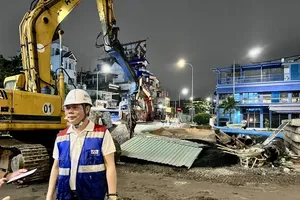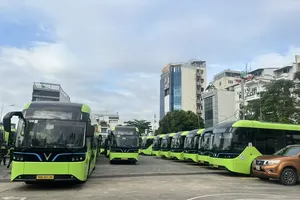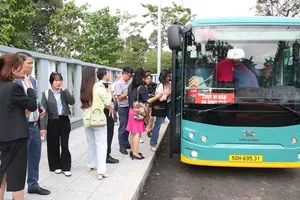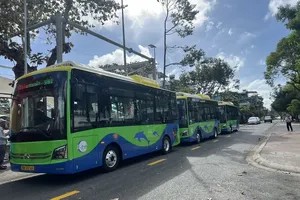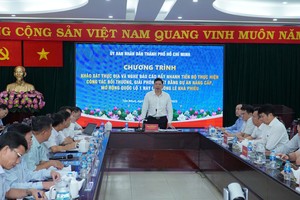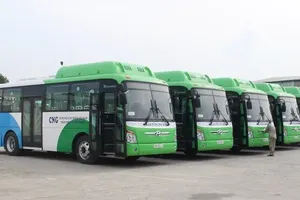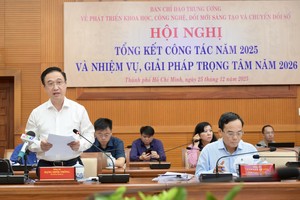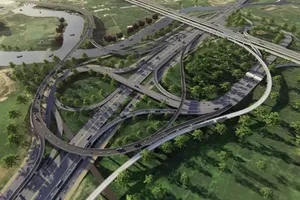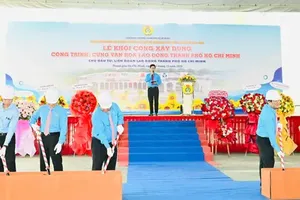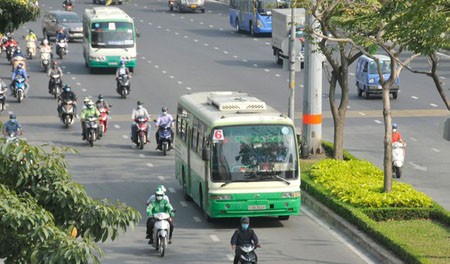
The HCMC Department of Transport shared that the city aims at possessing a multi-means public transport system, including 8 metro lines, 3 tram lines, 6 bus rapid transit lines (BRT), and 200 regular bus lines, in order to meet the traveling demands of the community.
Due to the dense population in HCMC, leading to the large number of private vehicles, urban traffic at the moment has to shoulder a heavy burden, and the average velocity of vehicles in the downtown is just 20-25km per hour.
To tackle this problem, the municipal authorities have adjusted the planning of the urban transport system to implement the Transit Oriented Development (TOD) model. This model maximizes the link between residential, business, manufacturing areas and the existing public transport system.
HCMC is going to apply this model along Metro Line No.1 (from Ben Thanh in the downtown to Suoi Tien in Thu Duc City), Metro Line No.2 (the first phase: Ben Thanh – Tham Luong in District 12; the second phase: Tham Luong – Cu Chi District) and Metro Line No.5 (the first phase Bay Hien Intersection in Tan Binh District – Sai Gon Bridge; the second phase: Can Giuoc Coach Station in Long An Province – Bay Hien Intersection).
The HCMC Management Center of Public Transport (MCPT) is going to introduce 21 high-quality bus lines. This is expected to rebuild the community’s trust towards buses, and thus increasing their bus use.
In order to fulfill the goal, these buses must maintain their route schedule and are not allowed to skip bus-stops or passengers under any circumstances. They have free Wi-Fi, a route monitoring device, a sound system automatically connected to MCPT to announce destinations, free newspapers to serve passengers.
Bus attendants must have good manner, especially towards the senior, the disabled, the ill, and the invalids. Bus drivers must ensure safety by strictly obeying traffic laws and minimizing disorder inside the bus.
The new 21 lines must have sufficient infrastructure, including bus stops, stopping space, regularly updated information boards about current routes and schedules. These facilities must be clean and not illegally occupied by peddlers.
As suggested by Associate Prof. Dr. Pham Xuan Mai from HCMC University of Technology (Vietnam National University – HCMC), it is critical that bus route schedules be maintained so that customer confidence is regained, and people come back to this common public transport.
Prof. Dr. Nguyen Thi Canh from the University of Economics and Law (Vietnam National University – HCMC) said that the formerly piloting scheme of bus priority lane on Tran Hung Dao Street encountered certain objection from the community. However, it is this practice, along with careful planning, that is implemented widely in developed countries to help buses be more welcomed by the public.
Experts in the field suggested that HCMC should launch the piloting scheme for bus priority lane on some major streets like Dien Bien Phu (from Ly Thai To Roundabout – Sai Gon Bridge) or Vo Thi Sau (from Dan Chu Roundabout – Dinh Tien Hoang Street), which has many bus lines.
Simultaneously, better private vehicle restriction rules should be introduced on these two streets to make the scheme more effective.
Accepted the recommendation, MCPT is going to pilot bus priority lanes on the mentioned streets at morning and afternoon peak hours on weekdays. Each lane is supposed to be 3.25m wide, separated with other lanes by road fence. These lanes are for buses, ambulances, firetrucks, mini buses, and passenger vehicles 12-seat+.
Lately, HCMC has built several new streets; yet the proportion of traffic space in the urban land use is a tiny minority of 10 percent, which is not even 1/2 of the standard. Adding to the problem is the ever-increasing number of private vehicles, reaching 9 million at present (including 7.2 million scooters).
With such a high traffic density, with a priority lane, it is truly challenging for buses to maintain their schedules. Some bus companies reported that 80 percent of their buses cannot fulfill this goal. Some are even 1 hour late.
Just 3 years ago, buses were the most favorite choice of students coming to Thu Duc University Village, and there was a bus running each 10 minutes. Sadly, over 1/2 of those lines are canceled now since they cannot ensure the precise arrival time.
Obviously, the development of public transportation must go along with a more logical control of private vehicle growth.






